

E-Books → Engineered Biochar Fundamentals, Preparation, Characterization and Applications
Published by: voska89 on 15-08-2022, 04:18 |  0
0
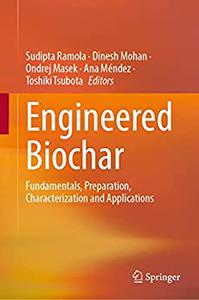
Engineered Biochar: Fundamentals, Preparation, Characterization and Applications
English | 2022 | ISBN: 9811924872 | 598 Pages | PDF EPUB (True) | 19 MB
This book systematically covers the fundamentals and applications of modified biochar. The 19 chapters are divided into 3 sections that provide a holistic overview for researchers from all related fields. Section 1 and 2 present the pyrolysis process, including the advantages and limitations of the physical, chemical, and biological modification methods and characterization of modified biochar. Section 3 highlights the wide spectrum of applications of modified biochar in fuel cells and batteries, remediation of organic and inorganic contaminants from soil and water and soil fertilization. Given its scope, the book appeals to a broad readership in various fields of chemical engineering, materials science, and environmental science.
E-Books → Characterization, Design, and Processing of Nanosize Powders and Nanostructured Materials Ceramic Transactions Series, Volume
Published by: voska89 on 6-08-2022, 21:33 |  0
0

Characterization, Design, and Processing of Nanosize Powders and Nanostructured Materials: Ceramic Transactions Series, Volume 190 By
2006 | 226 Pages | ISBN: 0470080337 | PDF | 13 MB
Provides an organized and carefully selected collection of current research papers from two recent symposia, including The Characterization and Processing of Nanosize Powders and Particles and Nanoscale and Multifunctional Materials symposia both held at the 6th Pacific Rim Conference on Ceramic and Glass Technology in Fall 2005. The topics covered include techniques to characterize nanosize powders and nanoparticle dispersions, green processing of nanopowders, and the sintering and microstructure of nanoparticle assemblies.Content:
E-Books → Characterization and Control of Interfaces for High Quality Advanced Materials II Ceramic Transactions, Volume 198
Published by: voska89 on 6-08-2022, 21:33 |  0
0

Characterization and Control of Interfaces for High Quality Advanced Materials II: Ceramic Transactions, Volume 198 By
2007 | 459 Pages | ISBN: 0470184140 | PDF | 45 MB
This volume includes papers from the Second International Conference on Characterization and Control of Interfaces for High Quality Advanced Materials, and Joining Technology for New Metallic Glasses and Inorganic Materials (ICCCI2006) in Kurashiki, Japan, 2006. Interfaces are critically important to a broad spectrum of materials and technologies. This Proceedings of ICCCI 2006 features 71 peer-reviewed papers on interface characterization and control technology for materials synthesis, powder processing, composite processing, joining, and to control airborne particulates.Content:
E-Books → Toward the Characterization of Helen in Homer Appellatives, Periphrastic Denominations, and Noun-epithet Formulas
Published by: voska89 on 4-08-2022, 00:26 |  0
0
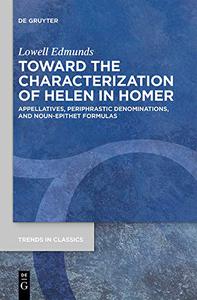
Lowell Edmunds, "Toward the Characterization of Helen in Homer: Appellatives, Periphrastic Denominations, and Noun-epithet Formulas"
English | 2019 | pages: 198 | ISBN: 3110626020, 3110763370 | PDF | 1,5 mb
Trends in Classics, a series and journal edited by Franco Montanari and Antonios Rengakos, publishes innovative, interdisciplinary work which brings to the study of Greek and Latin texts the insights and methods of related disciplines such as narratology, intertextuality, reader-response criticism, and oral poetics. Both publications seek to publish research across the full range of classical antiquity.
E-Books → Complex Macromolecular Architectures Synthesis, Characterization, and Self-Assembly
Published by: voska89 on 3-08-2022, 23:23 |  0
0
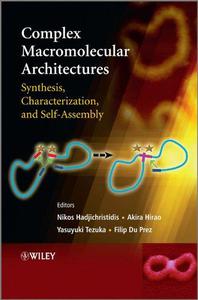
Complex Macromolecular Architectures: Synthesis, Characterization, and Self-Assembly By
2011 | 834 Pages | ISBN: 0470825138 | PDF | 110 MB
The field of CMA (complex macromolecular architecture) stands at the cutting edge of materials science, and has been a locus of intense research activity in recent years. This book gives an extensive description of the synthesis, characterization, and self-assembly of recently-developed advanced architectural materials with a number of potential applications. The architectural polymers, including bio-conjugated hybrid polymers with poly(amino acid)s and gluco-polymers, star-branched and dendrimer-like hyperbranched polymers, cyclic polymers, dendrigraft polymers, rod-coil and helix-coil block copolymers, are introduced chapter by chapter in the book. In particular, the book also emphasizes the topic of synthetic breakthroughs by living/controlled polymerization since 2000. Furthermore, renowned authors contribute on special topics such as helical polyisocyanates, metallopolymers, stereospecific polymers, hydrogen-bonded supramolecular polymers, conjugated polymers, and polyrotaxanes, which have attracted considerable interest as novel polymer materials with potential future applications. In addition, recent advances in reactive blending achieved with well-defined end-functionalized polymers are discussed from an industrial point of view. Topics on polymer-based nanotechnologies, including self-assembled architectures and suprastructures, nano-structured materials and devices, nanofabrication, surface nanostructures, and their AFM imaging analysis of hetero-phased polymers are also included. Provides comprehensive coverage of recently developed advanced architectural materialsContent: Chapter 1 Cyclic and Multicyclic Topological Polymers (pages 1-19): Takuya Yamamoto and Yasuyuki TezukaChapter 2 Ultrarapid Approaches to Mild Macromolecular Conjugation (pages 21-52): Andrew J. Inglis and Christopher Barner?KowollikChapter 3 Synthesis and Self?Assembly of Hydrogen?Bonded Supramolecular Polymers (pages 53-95): Wolfgang H. Binder, Claudia Enders, Florian Herbst and Katharina HackethalChapter 4 Recent Synthetic Developments in Miktoarm Star Polymers with More than Three Different Arms (pages 97-132): Akira Hirao, Mayumi Hayashi, Tomoya Higashihara and Nikos HadjichristidisChapter 5 Precise Synthesis of Dendrimer?Like Star?Branched Polymers, a New Class of Well?Defined Hyperbranched Polymers (pages 133-167): Hee?Soo Yoo and Akira HiraoChapter 6 Arborescent Polymers with a Mesoscopic Scale (pages 169-194): Toufic Nabil Aridi and Mario GauthierChapter 7 Hyperbranched Glyco?Conjugated Polymers (pages 195-227): Toshifumi Satoh and Toyoji KakuchiChapter 8 Highly Branched Functional Polymer Architectures by Click?Chemistry Strategies (pages 229-265): Mieke Lammens and Filip Du PrezChapter 9 Living Alkene Polymerization for Polyolefin Architectures (pages 267-316): Amelia M. Anderson?Wile, Joseph B. Edson and Geoffrey W. CoatesChapter 10 Precision Polyolefins (pages 317-347): Erik B. Berda and Kenneth B. WagenerChapter 11 Polyhomologation: The Living Polymerization of Ylides (pages 349-376): Jun Luo and Kenneth J. SheaChapter 12 Phenylenevinylene Homopolymers and Block Copolymers via Ring?Opening Metathesis Polymerization (pages 377-393): Chin?Yang Yu and Michael L. TurnerChapter 13 Block Copolymers Containing Rod Segments (pages 395-429): Tomoya Higashihara and Mitsuru UedaChapter 14 Synthesis of Well?Defined Poly(meth)acrylamides with Varied Stereoregularity by Living Anionic Polymerization (pages 431-460): Takashi IshizoneChapter 15 Complex Macromolecular Chimeras (pages 461-489): Hermis Iatrou, Marinos Pitsikalis, Georgios Sakellariou and Nikos HadjichristidisChapter 16 Self?Assembly and Applications of Polyferrocenylsilane Block Copolymers (pages 491-526): George R. Whittell, Jessica Gwyther, David A. Rider and Ian MannersChapter 17 Functional Polymeric Nanostructures Prepared by Self?Assembly and Beyond (pages 527-567): Rachel K. O'ReillyChapter 18 Morphologies of Block and Star?Branched Polymers with Three Components (pages 569-591): Hirokazu HasegawaChapter 19 Morphologies and Photophysical Properties of Conjugated Rod-Coil Block Copolymers (pages 593-622): Chi?Ching Kuo, Cheng?Liang Liu and Wen?Chang ChenChapter 20 Bulk Self?Assembly of Linear Hybrid Polypeptide?Based Diblock and Triblock Copolymers (pages 623-645): Sebastien LecommandouxChapter 21 AFM Study of Comb (Co)Polymers with Complex Chain Architecture (pages 647-683): Michel Schappacher and Alain DeffieuxChapter 22 Tunable Thermoresponsive Polymers by Molecular Design (pages 685-715): Richard HoogenboomChapter 23 Fluorine?Containing Block Copolymers: Synthesis and Application as a Template for Nanocellular and Porous Structures Using Supercritical Carbon Dioxide (pages 717-737): Hideaki Yokoyama and Kenji SugiyamaChapter 24 Architectural Polymers, Nanostructures, and Hierarchical Structures from Block Copolymers (pages 739-761): Ian Wyman and Guojun LiuChapter 25 Block Copolymer Nanostructured Thin Films for Advanced Patterning (pages 763-790): Michelle A. Chavis, Evan L. Schwartz and Christopher K. OberChapter 26 Ring Polymers: Effective Isolation and Unique Properties (pages 791-821): Haskell W. Beckham
E-Books → Extractables and Leachables Characterization of Drug Products, Packaging, Manufacturing and Delivery Systems & Medical Devices
Published by: voska89 on 29-07-2022, 23:57 |  0
0
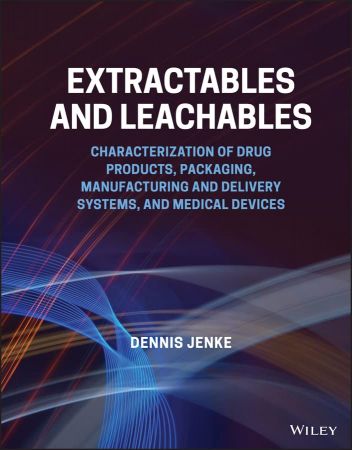
English | 2022 | ISBN: 1119605075 | 457 pages | True EPUB, PDF | 32.51 MB
EXTRACTABLES AND LEACHABLES Learn to address the safety aspects of packaged drug products and medical devices
Pharmaceutical drug products and medical devices are expected to be effective and safe to use. This includes minimizing patient, user or product exposure to impurities leached from these items when the drug product is administered or when the medical device is used. Clearly, patient or user exposure to leachables must not adversely impact their health and safety. Furthermore, these impurities must not adversely affect key quality attributes of the drug product or medical device, including its manufacturability, stability, efficacy, appearance, shelf-life and conformance to standards.
E-Books → Inorganic Nanostructures Properties and Characterization
Published by: voska89 on 28-07-2022, 23:27 |  0
0

Inorganic Nanostructures: Properties and Characterization By Prof. Petra Reinke(auth.)
2012 | 199 Pages | ISBN: 3527409254 | PDF | 3 MB
This monograph for young researchers and professionals looking for a comprehensive reference offers an advanced treatment of the topic that extends beyond an introductory work. As such, it systematically covers the inorganic nanostructures in the breadth needed, while presenting them together with the surface science tools used to characterize them, such as electron spectroscopy and scanning probe techniques. The unique challenges in the fabrication of nanostructures are illustrated, and set into context of controlling structure, dimensionality and electronic properties.
E-Books → Mechanical Characterization of Materials and Wave Dispersion Instrumentation and Experiment Interpretation
Published by: voska89 on 26-07-2022, 20:14 |  0
0
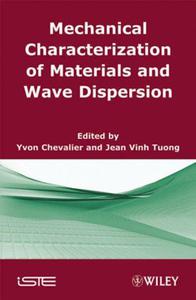
Mechanical Characterization of Materials and Wave Dispersion: Instrumentation and Experiment Interpretation By
2010 | 477 Pages | ISBN: 1848211937 | PDF | 14 MB
Over the last 50 years, the methods of investigating dynamic properties have resulted in significant advances. This book explores dynamic testing, the methods used, and the experiments performed, placing a particular emphasis on the context of bounded medium elastodynamics. Dynamic tests have proven to be as efficient as static tests and are often easier to use at lower frequency. The discussion is divided into four parts. Part A focuses on the complements of continuum mechanics. Part B concerns the various types of rod vibrations: extensional, bending, and torsional. Part C is devoted to mechanical and electronic instrumentation, and guidelines for which experimental set-up should be used are given. Part D concentrates on experiments and experimental interpretations of elastic or viscolelastic moduli. In addition, several chapters contain practical examples alongside theoretical discussion to facilitate the readers understanding. The results presented are the culmination of over 30 years of research by the authors and as such will be of great interest to anyone involved in this field.Content: Chapter 1 Guidelines for Choosing the Experimental Set?up (pages 1-11): Jean Tuong VinhChapter 2 Review of Industrial Analyzers for Material Characterization (pages 13-24): Jean Tuong VinhChapter 3 Mechanical Part of the Vibration Test Bench (pages 25-42): Jean Tuong VinhChapter 4 Exciters and Excitation Signals (pages 43-76): Jean Tuong VinhChapter 5 Transducers (pages 77-117): Jean Tuong Vinh and Michel NuguesChapter 6 Electronic Instrumentation, Connecting Precautions and Signal Processing (pages 119-153): Jean Tuong VinhChapter 7 The Frequency Hilbert Transform and Detection of Hidden Non?linearities in Frequency Responses (pages 155-186): Jean Tuong VinhChapter 8 Measurement of Structural Damping (pages 187-208): Jean Tuong VinhChapter 9 Torsion Test Benches: Instrumentation and Experimental Results (pages 209-253): Michel NuguesChapter 10 Bending Vibration of Rod Instrumentation and Measurements (pages 255-270): Dominique Le NizheryChapter 11 Longitudinal Vibration of Rods: Material Characterization and Experimental Dispersion Curves (pages 271-303): Yvon Chevalier and Jean Tuong VinhChapter 12 Realization of Le Rolland?Sorin's Double Pendulum and Some Experimental Results (pages 305-333): Mostefa Archi and Jean?Baptiste CasimirChapter 13 Stationary and Progressive Waves in Rings and Hollow Cylinders (pages 335-365): Yvon Chevalier and Jean Tuong VinhChapter 14 Ultrasonic Benches: Characterization of Materials by Wave Propagation Techniques (pages 367-395): Patrick GarceauChapter 15 Wave Dispersion in Rods with a Rectangular Cross?Section: Higher Order Theory and Experimentation (pages 397-452): Maurice Touratier
E-Books → Markov Processes Characterization and Convergence
Published by: voska89 on 26-07-2022, 20:11 |  0
0
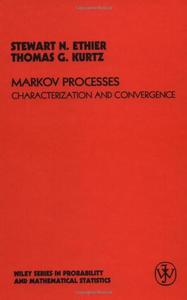
Markov Processes: Characterization and Convergence By Stewart N. Ethier, Thomas G. Kurtz(auth.)
2005 | 550 Pages | ISBN: 0471081868 | PDF | 13 MB
The Wiley-Interscience Paperback Series consists of selected books that have been made more accessible to consumers in an effort to increase global appeal and general circulation. With these new unabridged softcover volumes, Wiley hopes to extend the lives of these works by making them available to future generations of statisticians, mathematicians, and scientists. "[A]nyone who works with Markov processes whose state space is uncountably infinite will need this most impressive book as a guide and reference." -American Scientist "There is no question but that space should immediately be reserved for [this] book on the library shelf. Those who aspire to mastery of the contents should also reserve a large number of long winter evenings." -Zentralblatt fur Mathematik und ihre Grenzgebiete/Mathematics Abstracts "Ethier and Kurtz have produced an excellent treatment of the modern theory of Markov processes that s useful both as a reference work and as a graduate textbook." -Journal of Statistical Physics Markov Processes presents several different approaches to proving weak approximation theorems for Markov processes, emphasizing the interplay of methods of characterization and approximation. Martingale problems for general Markov processes are systematically developed for the first time in book form. Useful to the professional as a reference and suitable for the graduate student as a text, this volume features a table of the interdependencies among the theorems, an extensive bibliography, and end-of-chapter problems. Content: Chapter 1 Operator Semigroups (pages 6-48): Chapter 2 Stochastic Processes and Martingales (pages 49-94): Chapter 3 Convergence of Probability Measures (pages 95-154): Chapter 4 Generators and Markov Processes (pages 155-274): Chapter 5 Stochastic Integral Equations (pages 275-305): Chapter 6 Random Time Changes (pages 306-336): Chapter 7 Invariance Principles and Diffusion Approximations (pages 337-364): Chapter 8 Examples of Generators (pages 365-385): Chapter 9 Branching Processes (pages 386-409): Chapter 10 Genetic Models (pages 410-451): Chapter 11 Density Dependent Population Processes (pages 452-467): Chapter 12 Random Evolutions (pages 468-491):
E-Books → Characterization I --
Published by: voska89 on 20-07-2022, 10:39 |  0
0
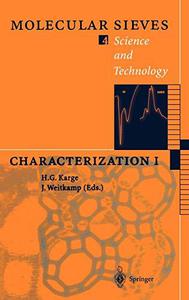
Characterization I: -/- By Helmut G. Karge, Ekkehard Geidel (auth.), Hellmut G. Karge, Jens Weitkamp (eds.)
2004 | 606 Pages | ISBN: 3540643354 | PDF | 6 MB
Molecular Sieves - Science and Technology covers, in a comprehensive manner, the science and technology of zeolites and all related microporous and mesoporous materials. Authored by renowned experts, the contributions are grouped together topically in such a way that each volume of the book series deals with a specific sub-field. Volume 4 covers the characterization of molecular sieves with the help of the most important spectroscopic techniques (Characterization I), i.e. IR, Raman, NMR, EPR, UV-VIS Spectroscopy, X-ray absorption, photoelectron and Mössbauer Spectroscopy. Theory, experiment and application in selected examples are discussed.



